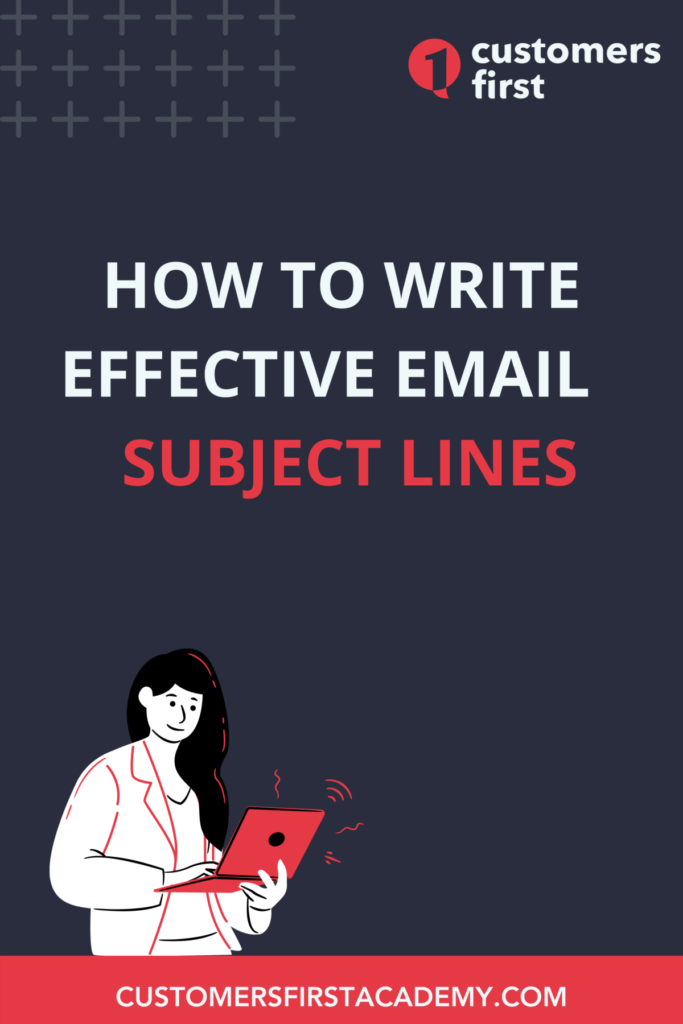How to Write the Perfect Email Subject Line
Ready to learn how to write really good emails with captivating subject lines? The subject line is one of the most important elements of every email that you send. This means two things. First, it cannot be misleading in any way, even by mistake. And second, it needs to be true to the main purpose behind the email.

While you’ll get better at writing your subject lines with some practice, it won’t happen if you don’t know the fundamentals.
Did you know that 47 out of every 100 people (Chadwick Martin Bailey Consumer Pulse Report) open their emails based on the subject line? Does this surprise you? It shouldn’t because the subject line is to an email what a headline is to a news article. And, most of us only read a news piece based on whether the headline appeals to us or not.
The same study also found that 64% of individuals open emails based on the sender. If they recognize the sending address, they open the email, and if they don’t who it’s coming from, they don’t.
So, other than the relationship between the sender and the receiver of the email, one of the most important aspects of an email is its subject line. This is why, in this article, we will explore the importance of subject lines while learning the best techniques for making them effective.
The Relationship Between Subject Lines and Emails
To write really good emails, you can view the subject line as the title or heading of your email. It defines the email message. It tells the reader whether the email is worth opening, how urgent it is, and most importantly, its overall purpose.
This is why when writing the subject line, you need to make sure that it conveys the primary purpose of your email message. Let’s look at some examples of various situations and what subject lines would be appropriate:
- If you’re applying for the job, you start your subject line with “Job application,”
- If someone referred you, make sure you write “Referred by XYZ for…,”
- If you’re following up on a previous email, mention “Following up on…,”
- If you’re inviting someone, write “Invitation for ABC meeting…,”
- If you’re making a request, appeal by saying “Request for 123…,”
- Finally, if you’re talking about a specific project or order, mention the project name or order ID at the beginning such as “Order No. 12345” or “Regarding Project ABC”.
How Long Should Your Subject Line Be?
The next thing you need to keep in mind while writing your subject line is its length. You can’t have a subject line that’s too long. You need to keep it short and crisp, preferably less than 40 characters.

The 40-character limit is imposed by most email platforms, while some even clip the subject line as short as 30 characters. What does this mean? It means that the subject line the reader sees in their inbox is shortened to fit into the available space.
Here’s an example:
If you write “we would like to invite you to our centenary celebration to be held at the Albert Hall…”
The reader will get a subject line that says “we would like to invite you to our cente…”
While it may create suspense in the mind of some readers, it doesn’t convey much beyond the fact that the email is an invitation. And, ambiguity is something you need to avoid in business communication at all costs.
So, you would be better off writing, “ABC’s Centenary Celebration Invitation to the Albert Hall.”
This way, the reader will at least see, “ABC’s Centenary Celebration Invitation…” and know that they are being invited to the Centenary Celebration of the company ABC.
Just because we recommend shorter subject lines, it doesn’t mean that the other extreme of the spectrum is appropriate. In other words, you shouldn’t leave the subject line blank. Not only will this irritate the receiver who may or may not delete it, but you’ll also be risking a shortcut to the spam folder.

Write Really Good Emails by Formatting the Subject Line
The subject lines don’t need any embellishments, especially in business communication. Following the US Navy’s K.I.S.S. principle would be perfect while writing subject lines.
K.I.S.S. is an acronym for “Keep It Stupid Simple” or “Keep it Simple, Stupid.” The principle is basically the US Navy version of minimalism. The US Navy would follow this principle whenever they were devising a new system or strategy. Naturally, this applies to subject lines, too.
What does this mean in practice, however? It means avoiding a series of punctuations (…!!!???), emojis, and sentences in all caps (THIS LOOKS LIKE YOU ARE SHOUTING). Again, don’t take this minimalism too far. Don’t remove punctuations altogether. You don’t want a “Let’s eat grandma” situation when you wanted to say “Let’s eat, grandma.”
Creating Urgency with Subject Lines
What if your email is very important and you want a quick response? What if you wanted a definite response even if it is a delayed response?

There are ways of doing this while keeping the K.I.S.S. principle in mind.
- The first is to use the high-priority feature available on most email platforms. Using this feature will result in there being an urgent icon (typically a star or a red exclamation mark) before your subject line in the reader’s inbox.
- Another method is to start your subject line with “Urgent,” “Important,” or even “Need Response.” You can even make it all caps if you want, provided it’s just a word or two and not sentences.
- The fourth, and the best, method is to construct your subject line in a way that the most important information comes first. For example, instead of writing “Information regarding your complaint for invoice no. 112233 refund,” you should write “Refund processed for Invoice no. 112233.”
Ideally, the fourth method should be enough for most email messages. The other three methods should only be used in really urgent circumstances. The bottom line is that if you want to write really good emails, your subject line should tell the reader what to expect inside the email. It should neither oversell nor undersell the purpose of the email and should be brief and straightforward.
Other Resources:
CustomersFirst Academy offers comprehensive customer service training designed to help you grow your skills and advance your career.
To keep learning and developing your knowledge of customer service, we highly recommend the additional resources below:
Generational Gaps: Break Barriers in Email Communication
Using Emails for Collaboration Among Employees
How to Establish Credibility with Professional Emails
Work humor: do’s and don’ts in business emails

